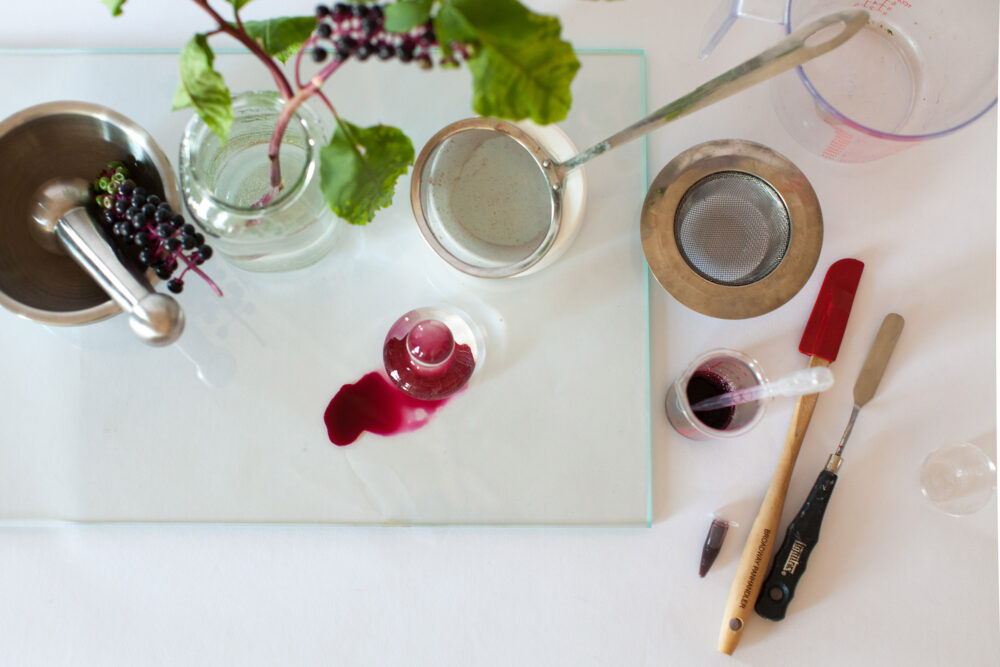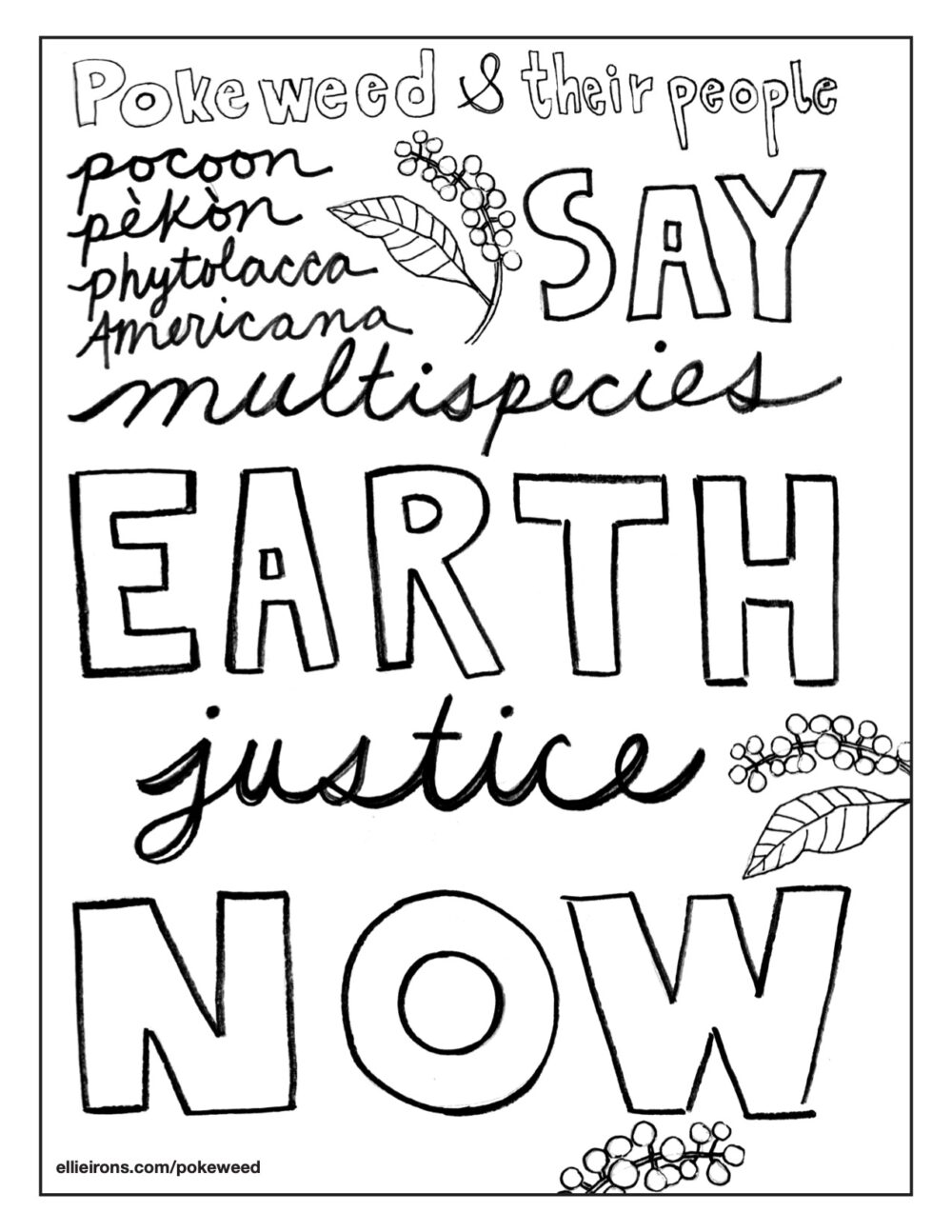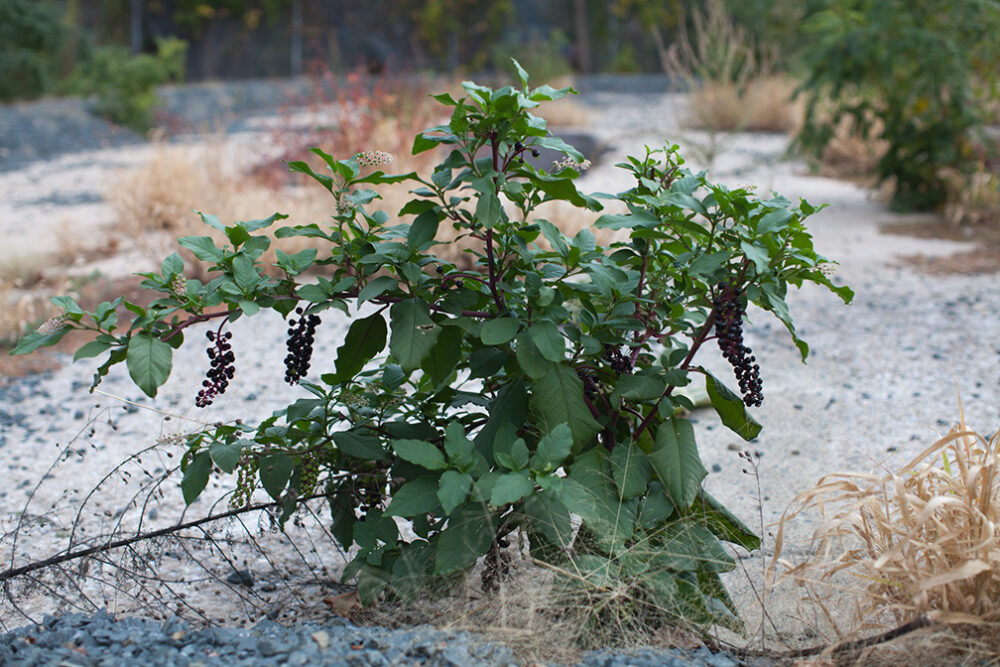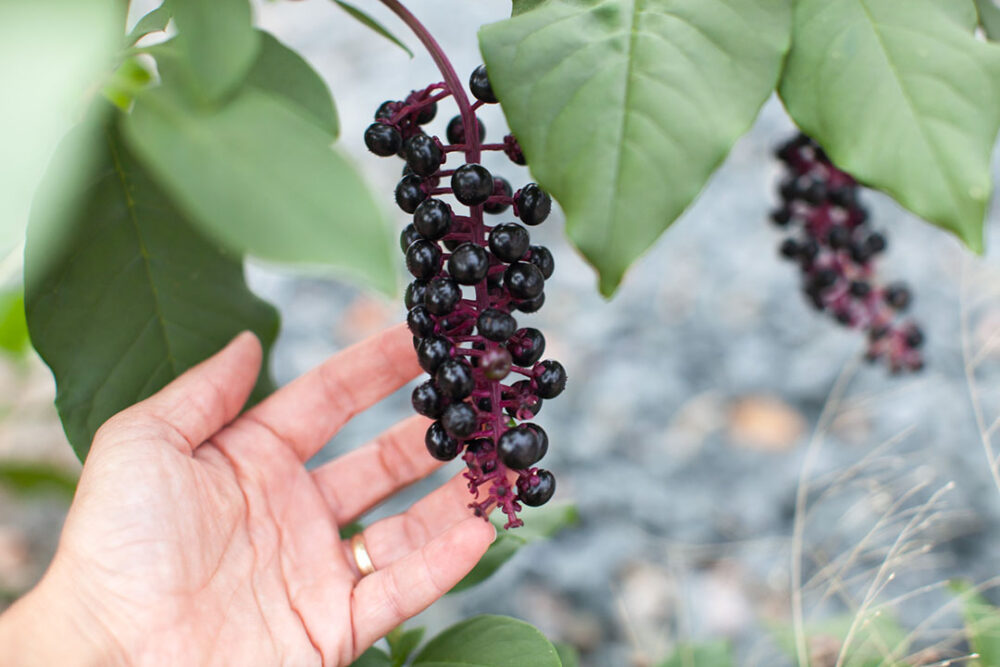
Pokeweed/pocoon/pèkòn/Phytolacca Americana: The common name pokeweed is most likely a con- traction of various Algonquin language terms for plants producing red dyes and the common English term weed. In Powhatan, an Algonquin language that was spoken in current-day Virginia, the term pocoon was used to refer to several dye producing plants, and has made its way into the current common name for the “wildflower” Lithospermum canescens, also known as hoary puccoon, whose roots yield a red dye (Ben- da, n.d.). Among the Lenape, who speak the Algonquin language Unami, the term for red dye is pèkòn (Lenape Talking Dictionary n.d.). As the Lenape Talking Dictionary notes, “Around the year 1600 the Lenape language was spoken by thousands of people. Now, the remaining speakers who grew up with Lenape as their first language have all left this life. We can be grateful that some of our elders took the time to try to preserve the Lenape language for us. They did this by teaching classes, making recordings, working with younger tribal members and with linguists” (Lenape Talking Dictionary n.d.). This is something I think about every time I visit with poke.

I like to say I kept painting because pokeweed told me to. They offered a juicy, toxic splash of magenta across my fingertips on a hot fall day in Brooklyn, and I swooned. I remember it well—the plant was sprout- ing from the edge of a side-patio by some garbage cans and a beat-up blue recycling bin. They seemed impossibly large. “Pretty sure I passed down this block last month,” I thought. “I sure don’t remember seeing you, but here you are!” The plant leaned out over the wrought iron railing onto the sidewalk, their luxurious green leaves arched off thick, sturdy pink-tinged stems. Pea-sized dark black-purple berries were arranged around a central stalk. I was naive then—of course I still am!—but then I had no idea who pokeweed was.
I didn’t know about their ten-thousand-year history on the land, their miraculous transition from the forest understories and meadow edges of Lenanpehokking to the streets and alleys of Brooklyn, the protective poisons held in their stems, leaves, berries, and especially roots, warding off two-legged and four-legged grazers but offering up nutritious nectar and berries to the winged among us. I was ignorant of their more recent journeys to other habitats, moving with a global flow of humans to root in other temperate climates around the world, where they’re now an “invader” but maybe also an antiviral miracle plant. In that moment I just sensed the ripe intensity of the berries of one particular plant, and instinctively reached out to investigate, gently probing, and they shared generously, a stream of color oozing across my thumb and forefinger there on the sidewalk, as I gazed in awe. Later, back in the studio, that deep pink-purple oozed across my palette in a vibrant wave, soaked into my brush with ease, and settled opulently on crisp white watercolor paper. I am grateful for that first encounter, and for every encounter since, in myriad habitats near and far, from the concrete riverbanks of current-day Los Angeles to estuarial fill along the Mahicanituck. Thank you.

